Under the guidance of history
teachers Kevin Daugherty and Jane Fisk, eleven million can tabs were collected
in 1996-97 by public school children from the Mahomet-Seymour Jr. High, Mahomet
Illinois, to represent the numbers of persons murdered by Nazi Germany during
the Holocaust. Six million tabs were collected to represent the numbers of
deceased Jews. Additionally 5 million tabs were collected to numerically
represent the other murdered minorities, including political dissenters,
gypsies, pacifists, disabled persons, homosexuals, as well as those who tried to
help the persecuted.
A few months after the
collection began, Eva Mozes Kor, survivor of Dr. Joseph Mengele's
experiments on twins, visited the students and contributed 119 tabs,
each representing a member of her family who was destroyed. Kor dropped
the tabs, one at a time, into the 890,000 that the students had already
collected. With added conviction the class intensified their efforts,
posting their collection on the internet in response to their awareness
of Holocaust denier web-sites. Syndicated press coverage fueled national
awareness of the tab collection. Millions of tabs began arriving. The
students met their goal eventually receiving 11 million tabs from all 50
states and eight countries. At a Yom HaShoah (Holocaust Remembrance Day)
commemoration, students poured out 6 million tabs in the gymnasium,
surrounding the mound with the added 5 million in shopping bags.
National and local news media brought this most important school effort
into the homes of millions of TV viewers across the nation. At the end
of the school year the tabs were sent for recycling. Schrier learned
about this soda tab collection just after completing a memorial to honor
holocaust hero Raoul Wallenberg, commissioned by the Simon Wiesenthal
Museum of Tolerance in Los Angeles. At the time, Schrier was looking for
possible material to use for a sculptural work resembling massive WINGS,
a form that he imagined while working on the Wallenberg project. He
states that the tabs, the dynamic experience of the students who
collected them and the noble efforts of thousands of tab contributors,
provided an exceptional opportunity for the artistic work he envisioned.
Robert Silverman, then Executive Director of the Champaign - Urbana
Jewish Federation, asked the recycler to hold up the recycling of the
nearly 5 tons of tabs. In response to Schrierís interest, the CEO of
the recycling plant, Lou Mervis, made the tabs available to him. After
five months of being challenged by the material, Schrier invented a
feather structure made from tabs, wire, and a two foot aluminum rod,
that students could build in workshops he subsequently designed.
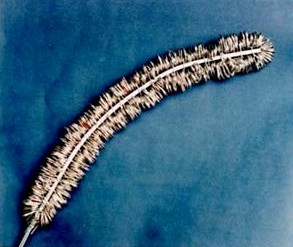
Since 1997,
approximately 60,000 participants from 23 states and Canada have
constructed soda-tab feathers for ten site-specific variations of WINGS of WITNESS. The project
creates a network of many thousands of helpers linked together
through art and hope, and constantly enlarging. Workshops are continuing until all of the
millions of tabs have been formed into the finished elements for the
sculptural works.
After the first
million tabs were converted into feather structures in
workshops, Schrier created a site-specific method of assembling them into configurations resembling wings. The structures are laid out
in overlapping rows by volunteers, according to a placement
guide drawn on plastic sheeting, initially reflective of a massive
butterfly. The Butterfly shape is a reference to
a poem written by young Pavel
Friedmann who was a prisoner at the Terezin concentration
camp in Czechoslovakia, and perished at Auschwitz.
|
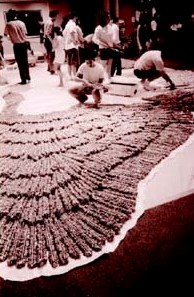
|
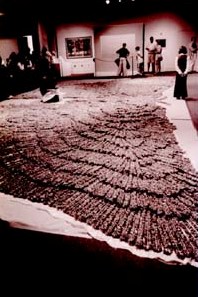
|
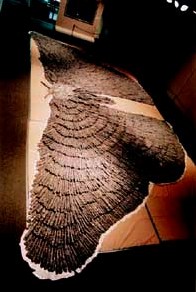
|
|
Photos: Janet Propst
|
|
Breman Museum,
Atlanta
|
"Wings Of Witness" at the William Bremen Jewish
Heritage Museum, Atlanta, 4/99
Each project installation is a response to the specific characteristics of the exhibition site. Newly made feathers are added,
further extending the scope of the project. Exhibitions travel to museums and cultural centers accompanied by a book containing sixty-thousand signatures and school,
museum and institution names, documenting participation to date.
Schrier assembled the first configuration as a work-in-progress in 1998 at the MSJH school with the community that collected the tabs.
Schrier's second version was exhibited September 1998- February 1999 at Yeshiva University Museum, Manhattan.
The third variation of the Wings was presented in April-May 1999 at the Breman Museum, Atlanta, where nearly one thousand students
constructed feathers during the week of Yom HaShoah, Holocaust
Remembrance Day. Containing over one and a half million tabs, the
assemblage spanned nearly forty feet across the gallery, numerically
recalling the number of children destroyed during the Holocaust.
For the fourth
interpretation in the summer of 2000, Schrier designed a massive version
to spread on the side of a mountain slope in Simi Valley, California at The
Brandeis Bardin Institute, where he was assisted by the counselors-in-training, campers and
institute staff.
|
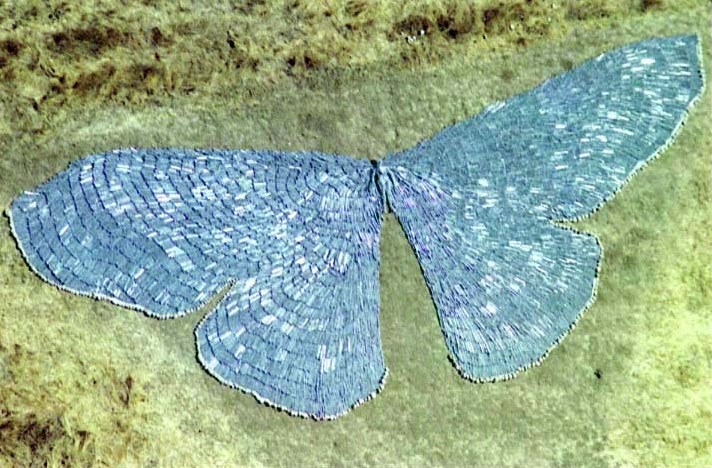
|
|
Aerial Photo: Yoni
Boujo: Simi Valley, CA
|
Challenged by the columns
of the changing exhibitions gallery at Holocaust Museum Houston in 2000,
Schrier designed fifth interpretation of the WINGS and lead several
thousand more participants in the construction new tab-feathers, and in
the installation of the work. In June 2001 Schrier directed the sixth
incarnation that he designed, spread in a meadow at historic Ida Lee
Park, Loudoun County Virginia. Schrierís seventh site specific
interpretation went on to grace a meadow on Long Island Sound in 2003 at
The Nassau County Holocaust Memorial and Educational Center, Glen Cove,
NY. In 2005 Schrier designed a wingspan penetrated by massive pines that
traversed the sculpture garden of the Katonah Museum of Art, Westchester
County NY.
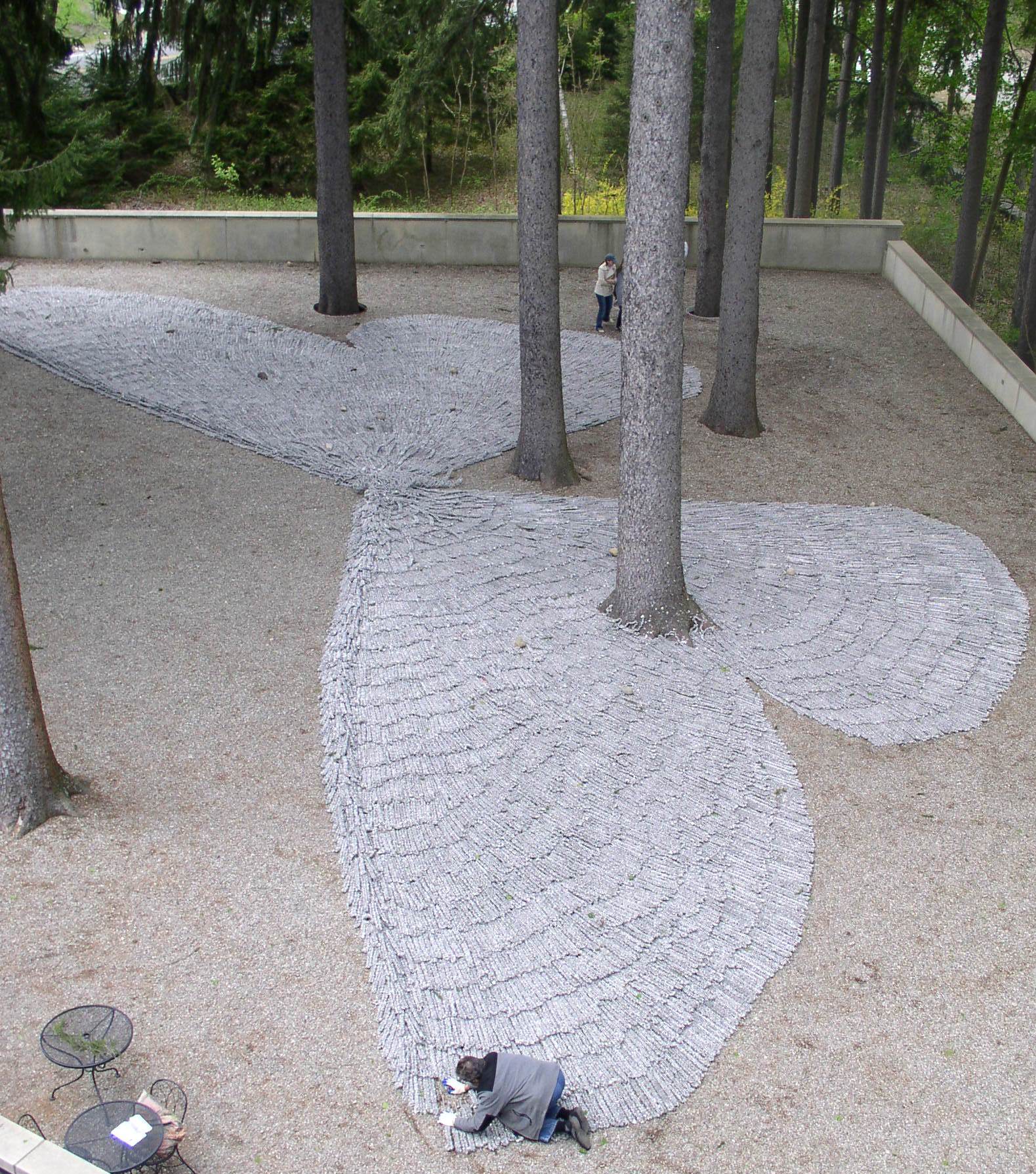
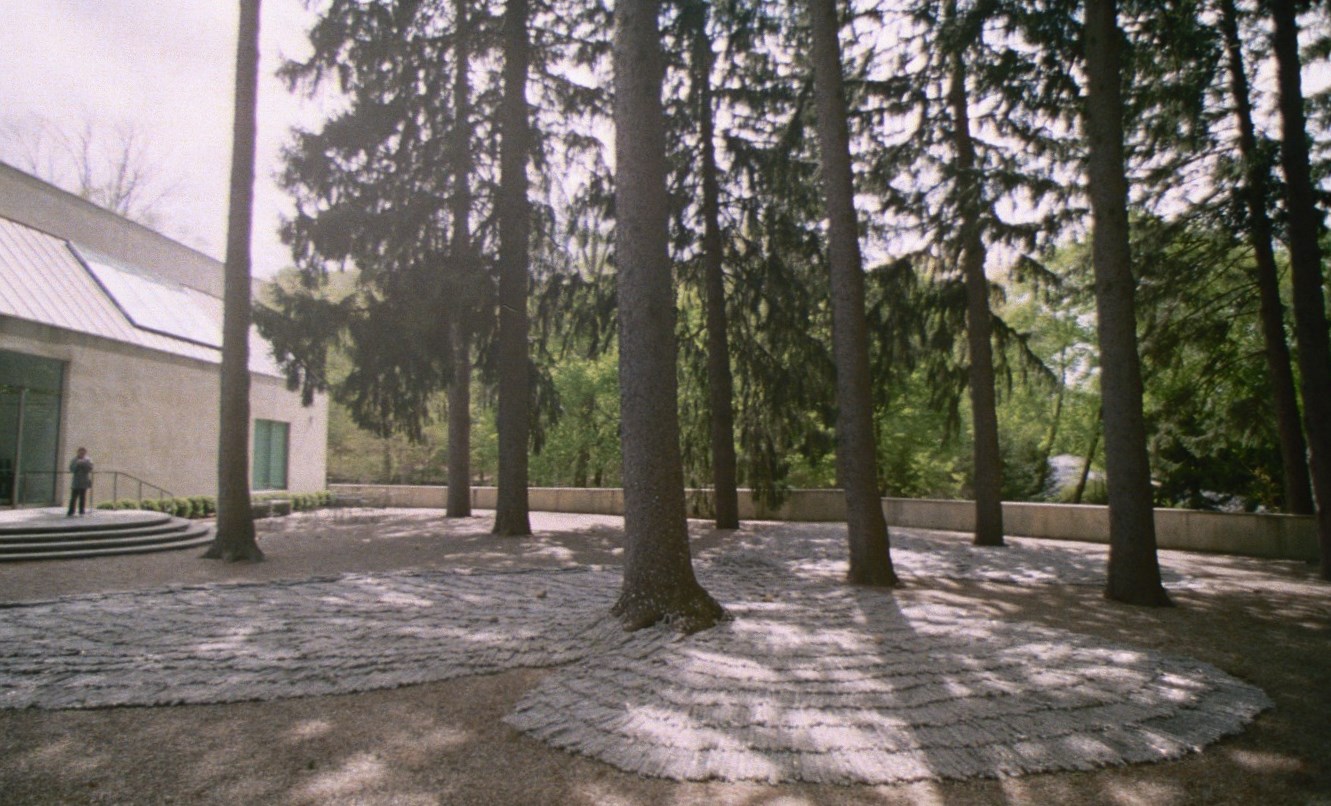
Photos:
Dan Theodore: Katonah Museum of Art
Similar to other installation sites, the assemblage was
accompanied by a gallery exhibition with a project photo chronology, and
a selection of Schrierís related works of art.
Prior to its exhibition at each of these sites, Schrier conducted
workshops where several thousand additional area participants made
feather structures for continuing installations. From October 2013 to
December 2014, The Hudson Valley Center for Contemporary Art, Peekskill,
NY, featured Schrierís Unfinished Flight, a newly conceived upright
version of the winged assemblage sculpture spread across a massive
museum wall.
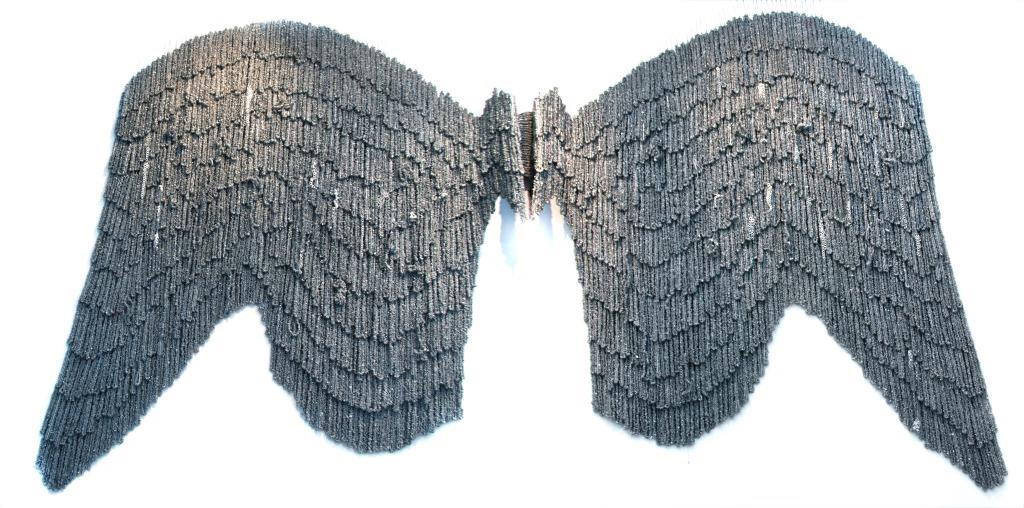
Photo: Steve Jacoby, Hudson Valley Center for Contemporary Art
WINGS of WITNESS workshops continue. When needed, added soda
can tabs are purchased by WINGS of WITNESS from Ronald McDonald House
Charities. The Charities collect the tabs to provide support for
families of severely ill children. Then, the otherwise nearly worthless
tabs, have a second phase of purpose in teaching tolerance by becoming
part of the multiple versions of the WINGS of WITNESS memorial.
Please see
Photo Metamorphosis for dramatic visuals of youth and adult participants
and the development of WINGS of WITNESS.